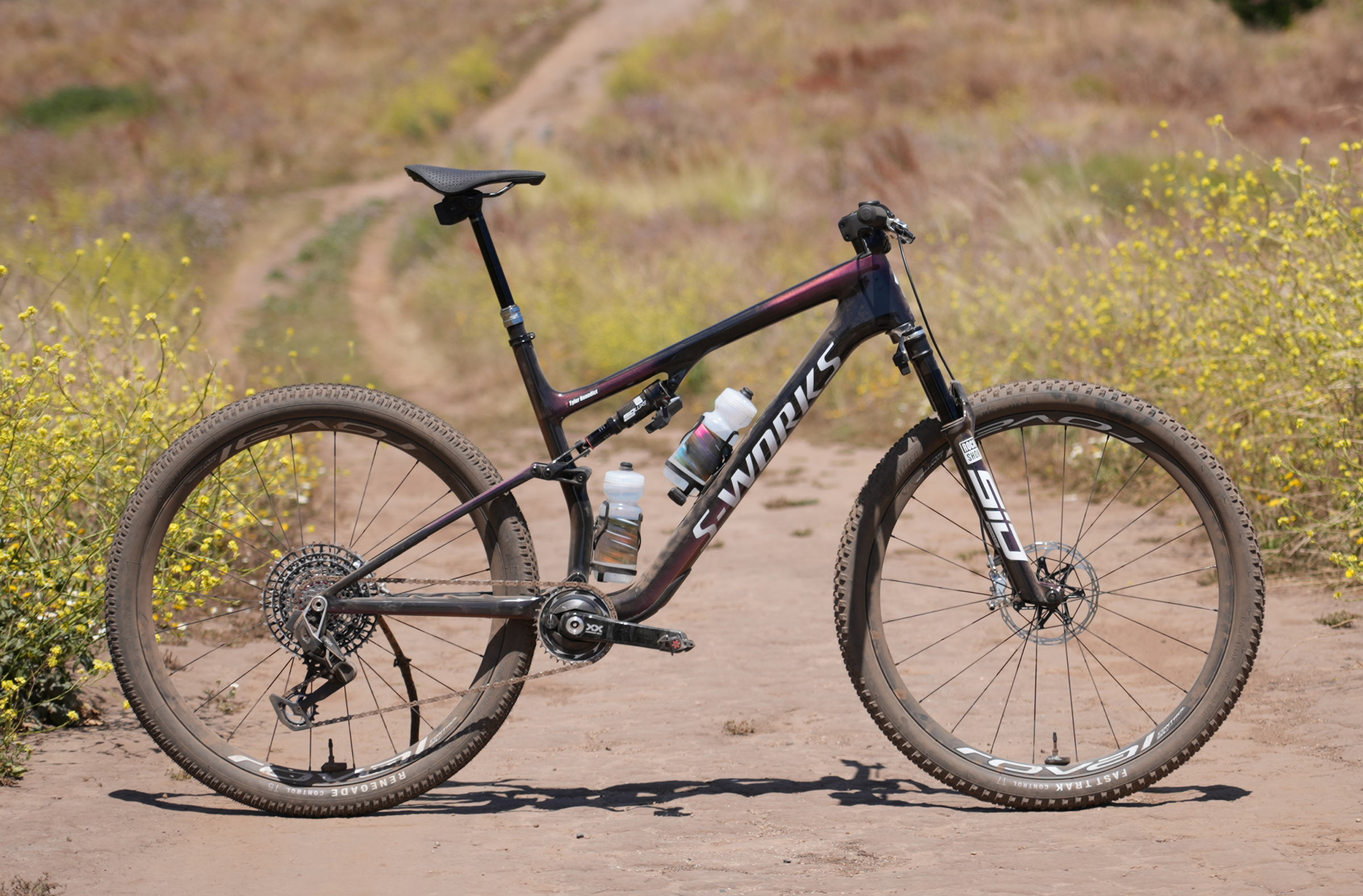Now in its eighth iteration, the Specialized Epic keeps its cross-country race heritage evident but expands its capabilities with an even more aggressive EVO model.
These two new bikes, called “Epic 8”, give Specialized three full-suspension XC bikes under the Epic moniker, joining the shorter-travel Epic World Cup that debuted in April 2023 with an inline shock. The idea is to give racers three options – the Epic Hardtail (which is likely due for a refresh itself), the Epic World Cup, and the Epic S-Works – plus an Epic EVO model for riders who want something more playful but still fast.
Before we get to the specific models and their differences, let’s look at what’s new with the frame and why they changed what they did…
What’s the TL;DR on the new Specialized Epic?
There are a lot of words and pictures below this, but if you only want the highlights, here ya go:
- Epic 8 has more travel – 120mm rear with 120-130mm forks
- Frames are lighter despite adding SWAT storage and being longer & slacker
- It’s faster thanks to new kinematics, no BRAIN shock needed
- Yes, the S-Works model is ridiculously expensive
Curious? Grab a coffee and let’s dive in…
Why have so many Epic options?
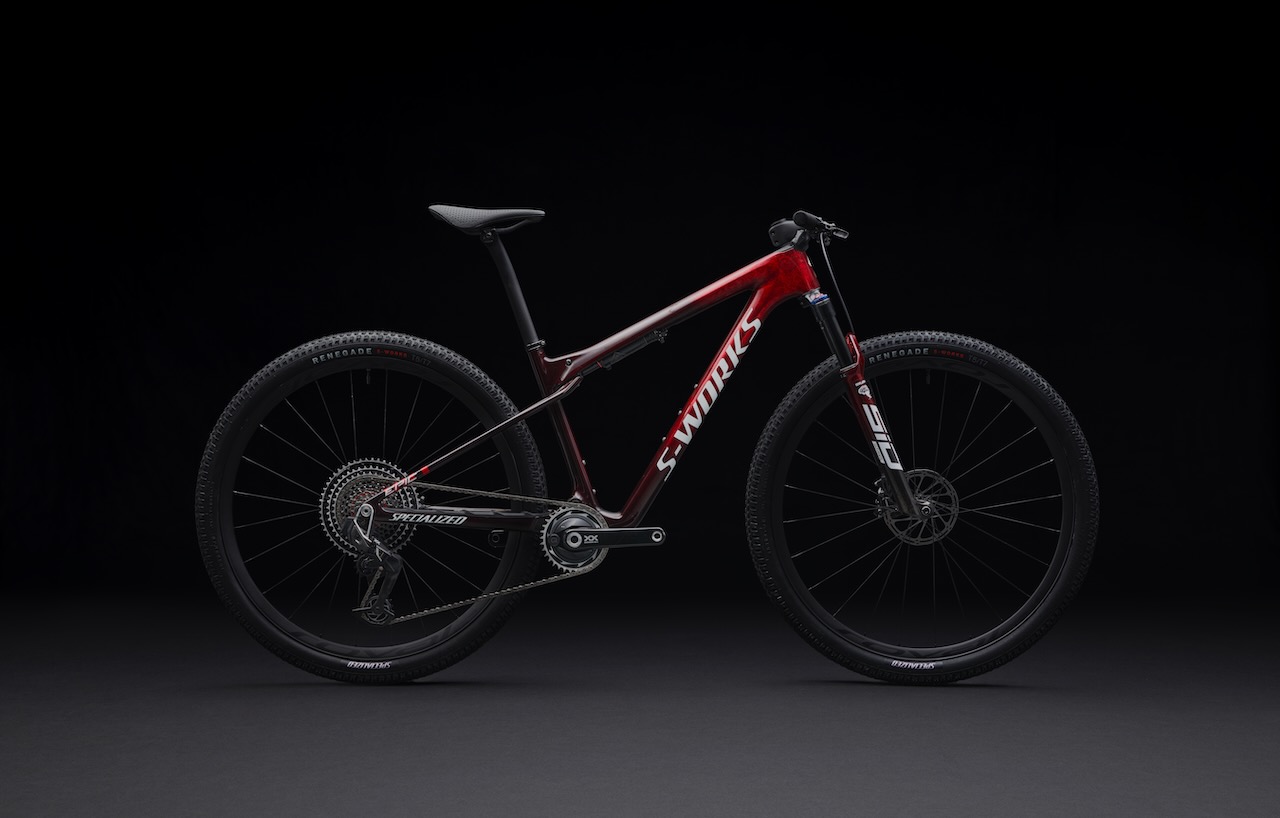
With a model that’s been in the line as long as the Epic, you have to ask, what’s left to change?
The better question might be, how have riders and courses changed? And what needs to change on a bike to keep up?
Earlier, Specialized launched the Epic World Cup (WC, shown above), with a semi-integrated rear shock, short 75mm rear travel, and the lightest possible frame. IMO, it eliminates any need for a hardtail altogether, potentially giving Specialized a single model for every XC race.
So it was a bit of a surprise to see two additional new Epics launch just months later, but Specialized says these two new options give riders the right tool for the job, no matter what type of course they’re up against.
Justification for the Epic 8

The prior Epic had 100mm rear wheel travel with a BRAIN-equipped shock, which meant it was more complex yet with barely more travel than the new WC model in the rear. And with 100mm forks, it had 10mm less travel than the new WC.
The new Epic 8 bumps up to 120mm rear wheel travel with matching 120mm forks, making it a much more capable bike than the WC when things get rowdy. It’s purpose-built for modern UCI XCO tracks, where efficiency and weight can’t come at the expense of capability.

In their words, the new Epic 8 is “Fastest for XC Racing”, which may seem like an odd claim when the World Cup model exists, so let’s back up a sec. The Epic World Cup is “Fastest on SMOOTH XC tracks”, which means two things. For top pros who have to use the same bike for both short track and XC courses, it’s a good compromise between a hardtail and a full suspension bike when the XC course isn’t too aggressive.
For those of us without a team truck and a six-figure racing budget, it’s a great option for amateur racers who live in flat terrain and want suspension but don’t need much of it and want the lightest possible bike.
Justification for the Epic 8 EVO
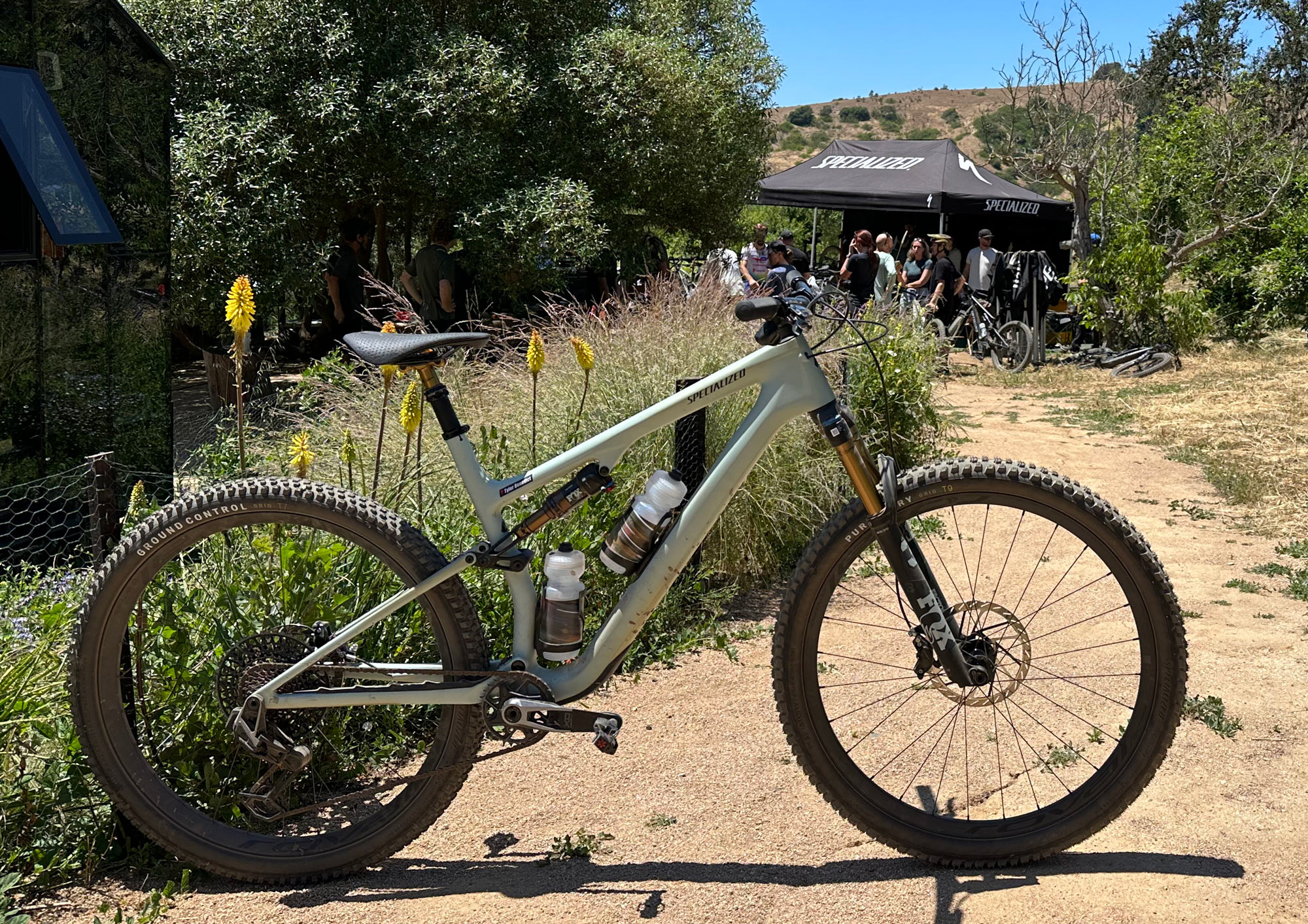
The prior Epic EVO had 110mm rear travel with 120mm forks. The new Epic 8 EVO has the same frame as the standard Epic 8, with the same 120mm rear wheel travel, but fork travel increases to 130mm.
Where the standard Epic is for racers, the Epic 8 EVO is for people who might occasionally race but mostly want a fast bike that’s also fun. Specialized suspects most riders wanting a short travel bike will be best served by the EVO model, and I agree. You’ll see why further down in this post.
2024 Specialized Epic 8 tech details & features

Impressively, the new S-Works level Epic 8 frame is 76g lighter than the prior S-Works Epic. The frame, with all hardware, including the rear axle (which threads into the T-Type derailleur, hence the open dropout in the pic) and a non-Flight Attendant shock is just 1.81kg (3.99lb).
And they could have made it lighter if they were making a bike that was only for racing. But they wanted something that’s very capable and instills confidence. And convenient…the SWAT system adds a bit of weight, but it’s worth it.
And it has more travel than before, with a longer, slacker frame, and an integrated steering stop so your handlebar won’t smash your top tube. Which makes the sub-4lb weight very impressive!
The Epic 8 EVO frames are up to 120-130g lighter than before, depending on size, but are overall a bit heavier for reasons you’ll soon see.
So, how did they drop weight?

To cut weight across all frames, they eliminated all compression-molded carbon parts, which are often used for thicker sections like shock mounts. Those parts add weight and usually need to be bonded on, which adds filler (aka more weight).
Instead, Specialized designed the forward shock mounts directly into the layup and bladder-molded top tube, then machine away the spots where they attach the mounting hardware. This section alone saved ~24g, allowing more continuous fibers for a stronger tube. For S-Works, they went further and made a carbon fiber shock extension at the yoke, plus a titanium shock mount, extension bolt, and internal pivot hardware.
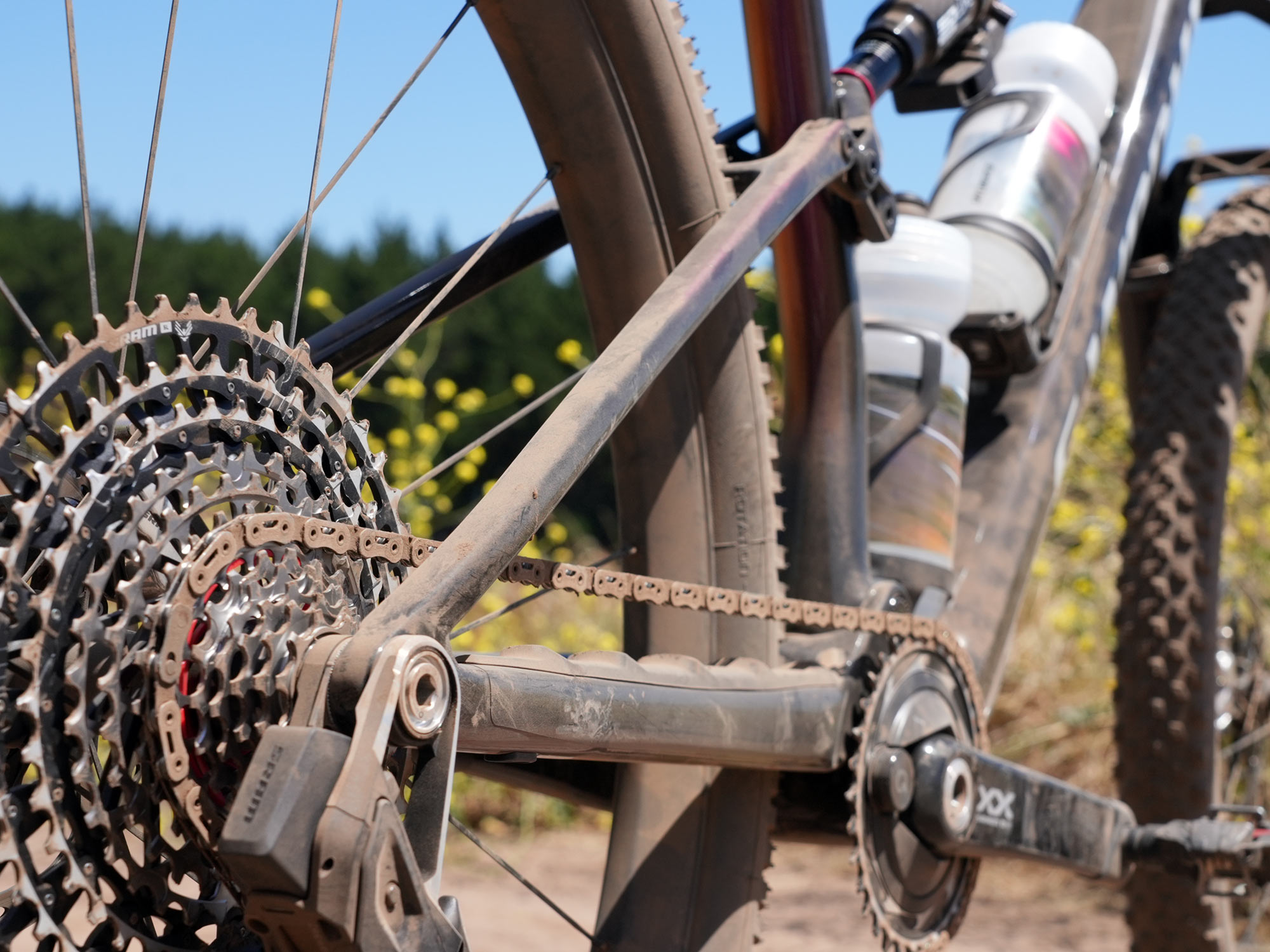
They also cut weight with smaller dropouts and slimmer seatstays (reduced diameter), which is fine because most of the stiffness comes from the chainstays.
The S-Works frames use their top-level FACT 12M carbon, which they say is incredibly expensive, but it’s stiffer and stronger so they can use less of it. Inside, there are no internal tubes for cable guides other than the rear brake, which saves weight from the tubes and also the extra bonding required to connect them.
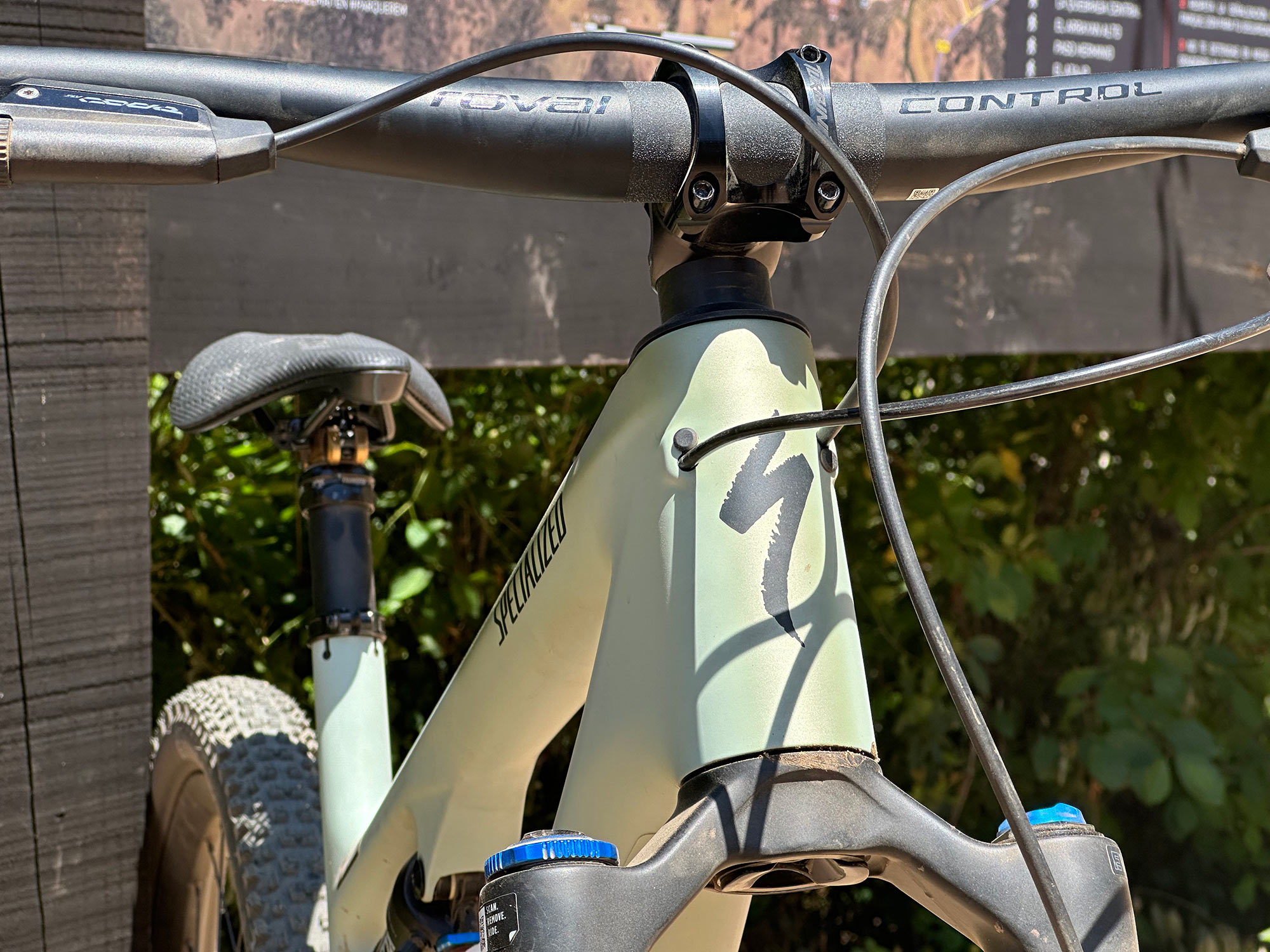
Below the S-Works level are FACT 11M frames, which have a bit more carbon, but are designed to have the same exact ride quality and stiffness. These do have internal guides for mechanical rear derailleur and dropper post routing, which adds a bit more weight, too.
And standard Epic 8 frames are up to 120-130g lighter than before, depending on size.
What about ride quality?
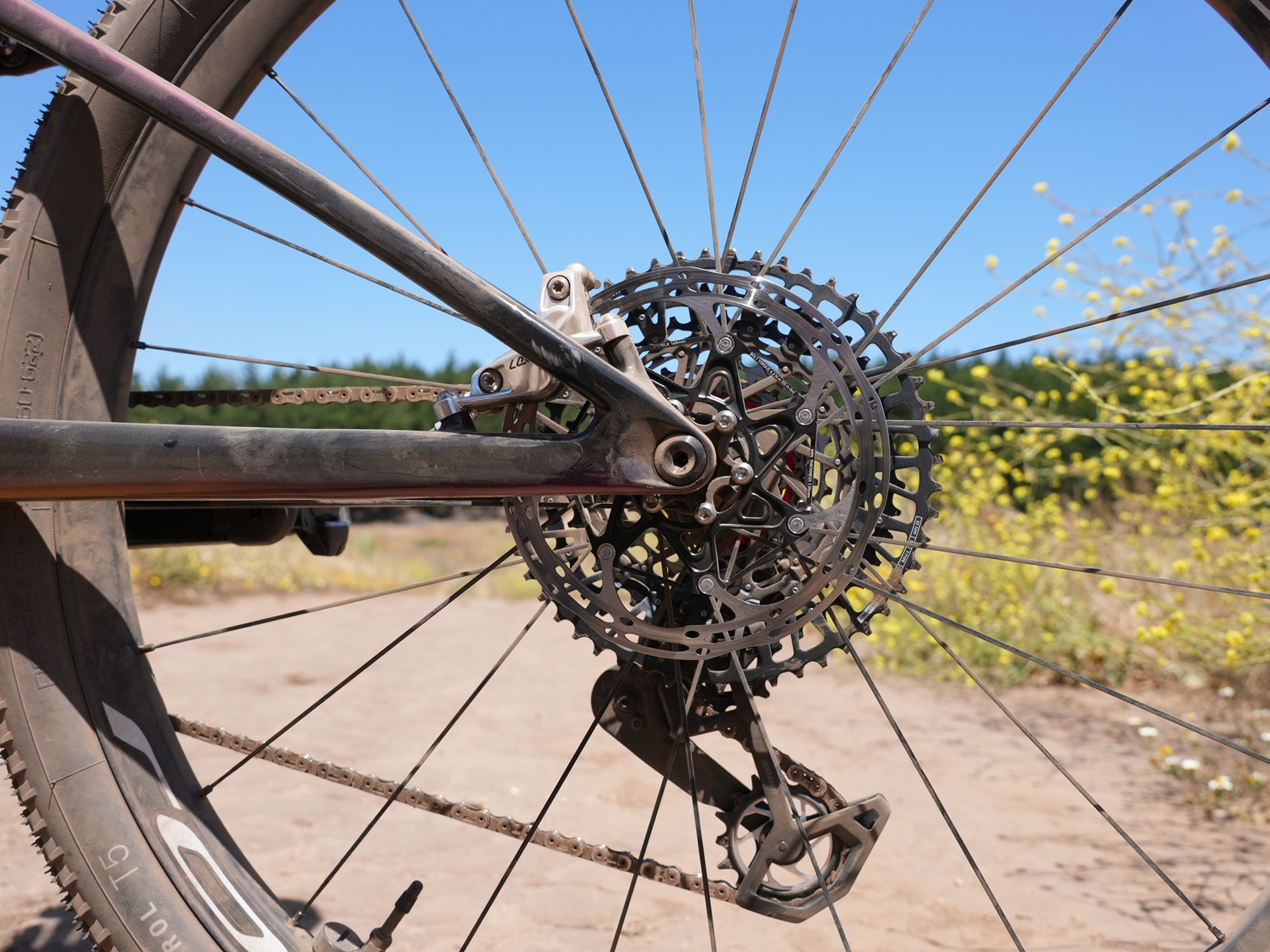
All frames have size-specific layups and tube shapes, letting them optimize for different rider sizes and weights. They say the layup schedule and plies are nearly the same across the size range, but the sizes of each ply and actual tube shapes and diameters change as sizes go up.
The overall frame and torsional stiffness throughout the frame carry over unchanged. They were happy with the way the prior frame was, so nothing’s changed there.
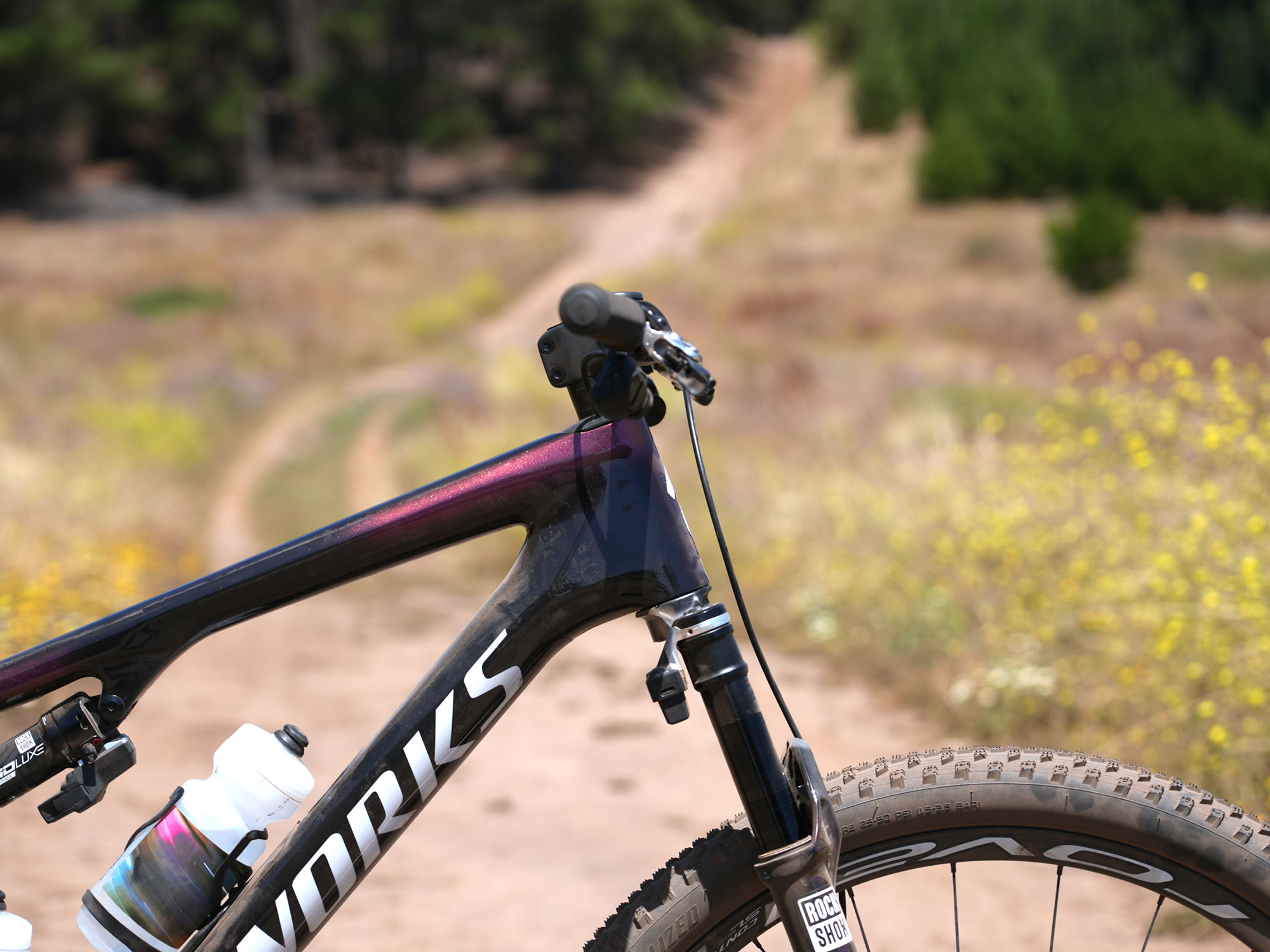
Like all modern bikes, it keeps getting longer, lower, and slacker. It comes with really short stems and a bit longer reach. They tested a lot, with a custom-built test mule frame that let them try different head angles, reach, etc. They pushed it until it was ‘crazy”, then dialed back a bit before bringing in the team riders for their input. Beyond modernizing the geometry and increasing travel, the real ride quality improvements come from the suspension…
Tricky suspension tuning FTW

Behind the scenes, their Ride Dynamics engineers start with the desired kinematics and ride performance, then figure out how to make it happen. Some of that comes from the frame, and some from the fork and shock. Specialized works with the suspension brands to get custom tunes on both. This is somewhat unique – most brands get custom tunes for the rear shock, but not many brands go to the trouble to do custom tunes for the fork.
It’s not just done by feel. Their team has backgrounds in F1 and Trophy Trucks, plus some of the same testing equipment used in those industries to verify performance improvements and apply all of that to their full-suspension bikes.
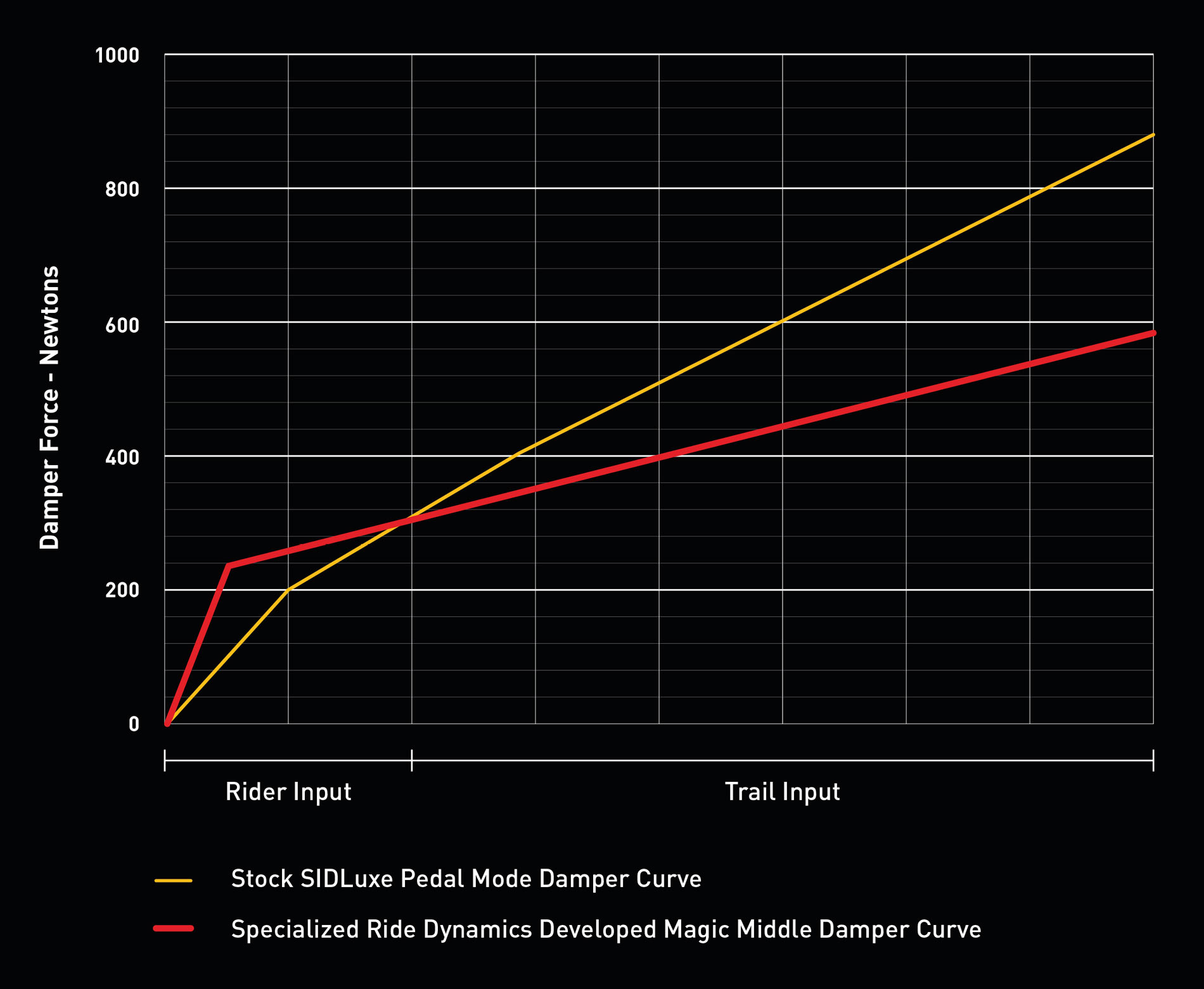
The rear shock has three modes, like most shocks. The lockout mode is very stiff like racers want, but the “Magic Middle” Pedal Mode setting is where, well, the magic happens.
First, they tuned the damper with more low-speed compression damping to resist pedal inputs and support the rider when cranking through little rollers and small bumps. But the high-speed compression damping matches the Open mode so that it can quickly and fully react to big bumps.
Then, they removed all of the shock’s volume spacers and the bottom-out bumper to give them a lot more air volume. This gives it a plush feel that can easily get deeper into the stroke for a more bottomless feel. The combination means good pedaling support and a shock that’s also very active when you need it to be. Magic, indeed, and they say this middle setting is where you’ll want to be 80% of the time during a race.
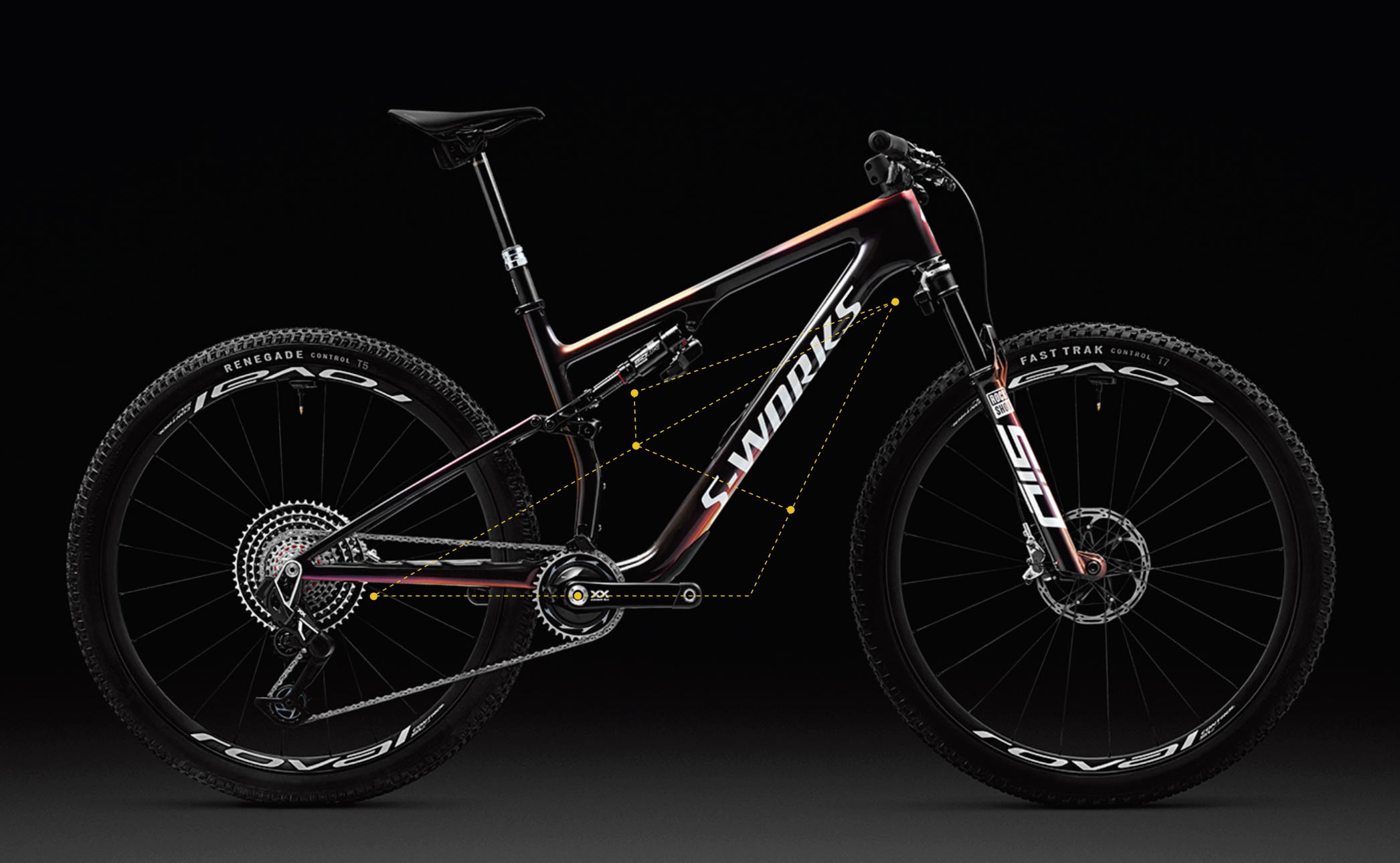
The top models get Flight Attendant to manage all those modes for you, and lower models use a three-position TwistLoc remote. As convenient as the TwistLoc is, on a multi-hour or multi-day race, that’s still a lot of mental processing to manage, so they made that middle mode a sweet spot that works great for almost everything. Meaning, you can kinda set it and forget it.
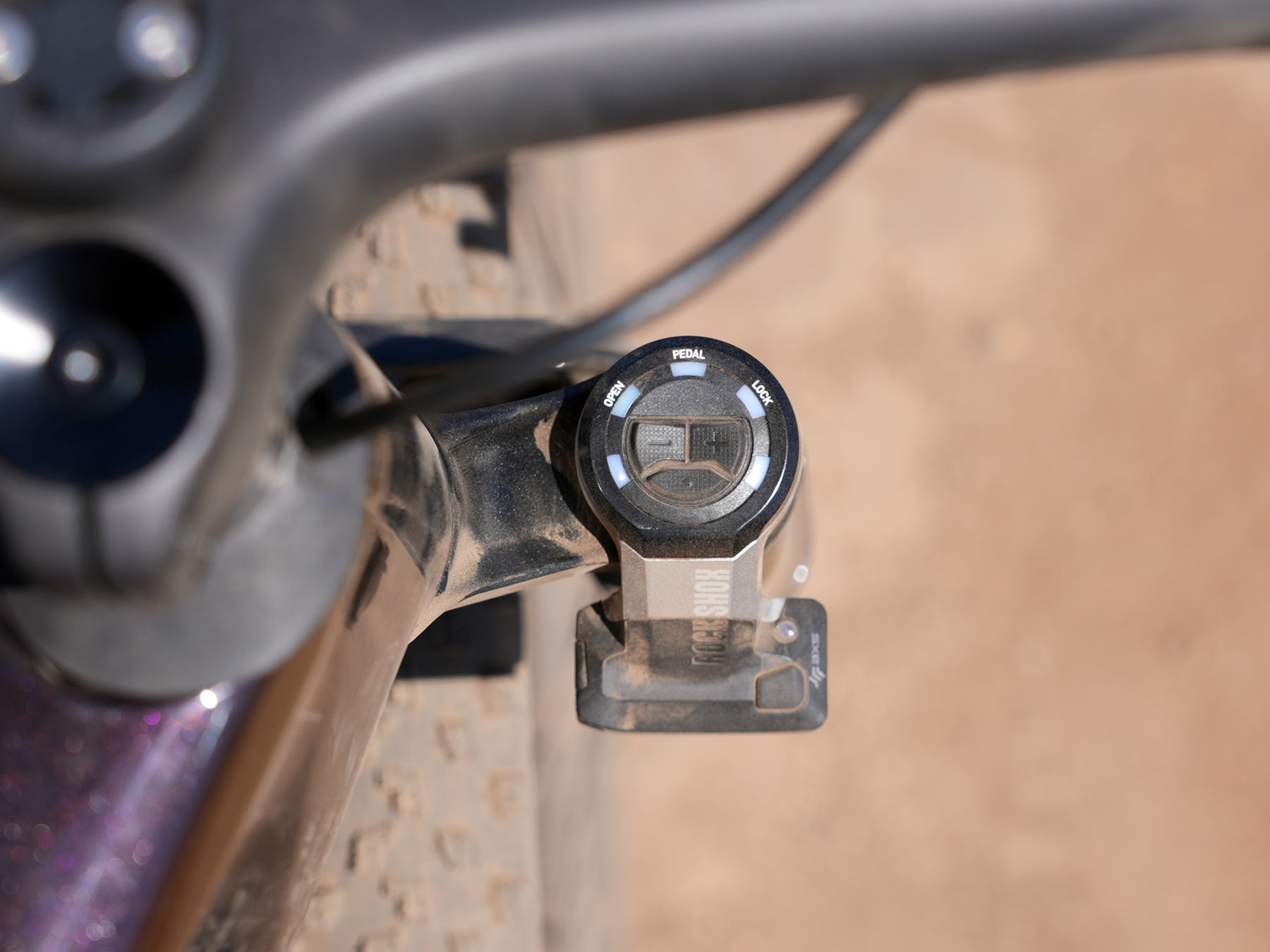
All versions of the Epic 8 have the same shock and fork tunes across all price points, regardless of how they’re managed. The Flight Attendant bikes just give you more customization options, which I covered in this post.
It’s slightly different for the EVO models.
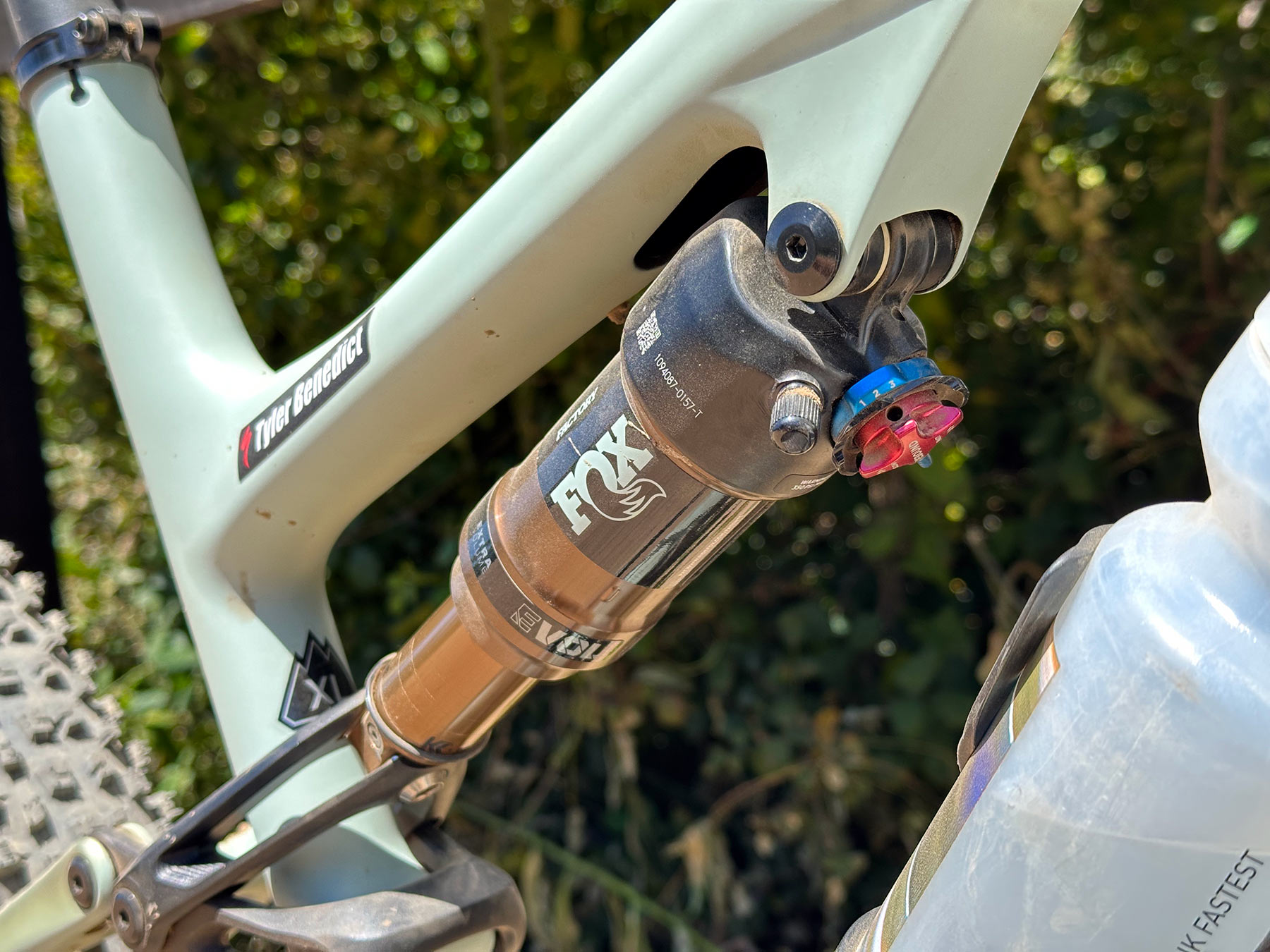
The Epic 8 EVO suspension loses the Magic Middle mode, it’s just Open and Lock. These bikes also have no remote lockout, relying on a custom-tuned, two-position Fox Float shock. The Open mode has minimal compression damping, and the Sprint (Lockout) mode keeps it really firm. Both work quite well.
Regardless of which version and shock you get, the new Epic 8 has 20% less pedal bob in the “open” shock setting than the prior model, but without diminishing the suspension’s ability to remain active when pedaling. They say it’s also 12% smoother, with the frame able to absorb more vibration and bump forces, which means fewer of those forces reach the rider, so you stay fresher.
There’s also adjustable geometry
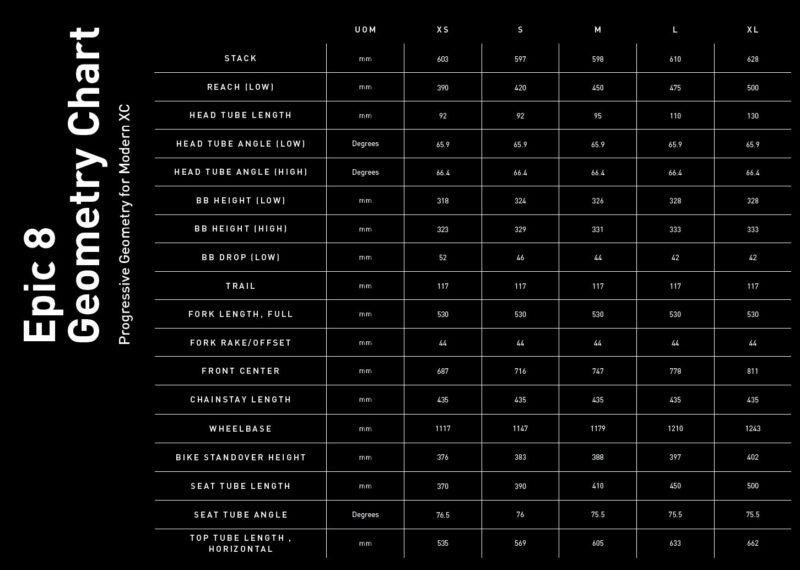
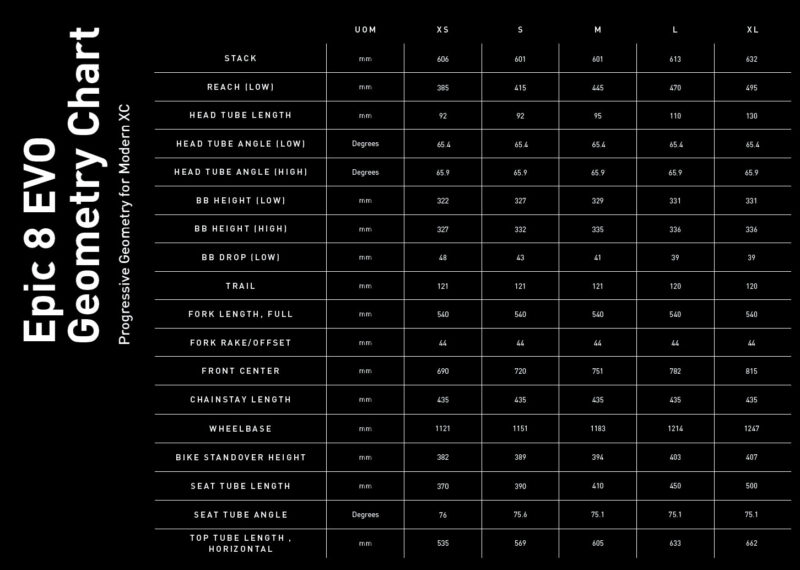
For the first time, the Specialized Epic gets adjustable geometry via a flip chip at the rear shock mount. It changes the head angle by about 0.5º and BB height by 5mm. Click either geometry chart to enlarge the image.
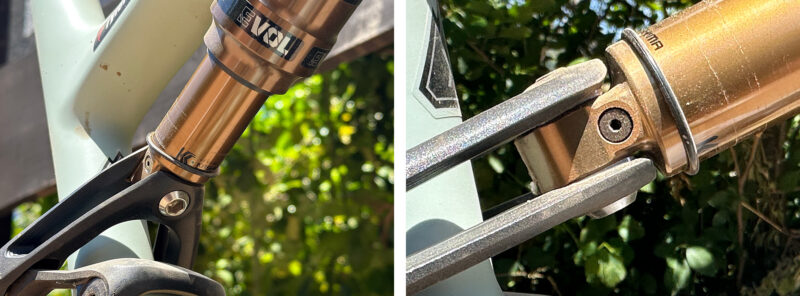
The flip chip is invisible, hiding inside the front of the shock yoke. Just remove the rear shock mount bolt, flip it around, and reattach the shock to change it.
About that stealth cable routing…
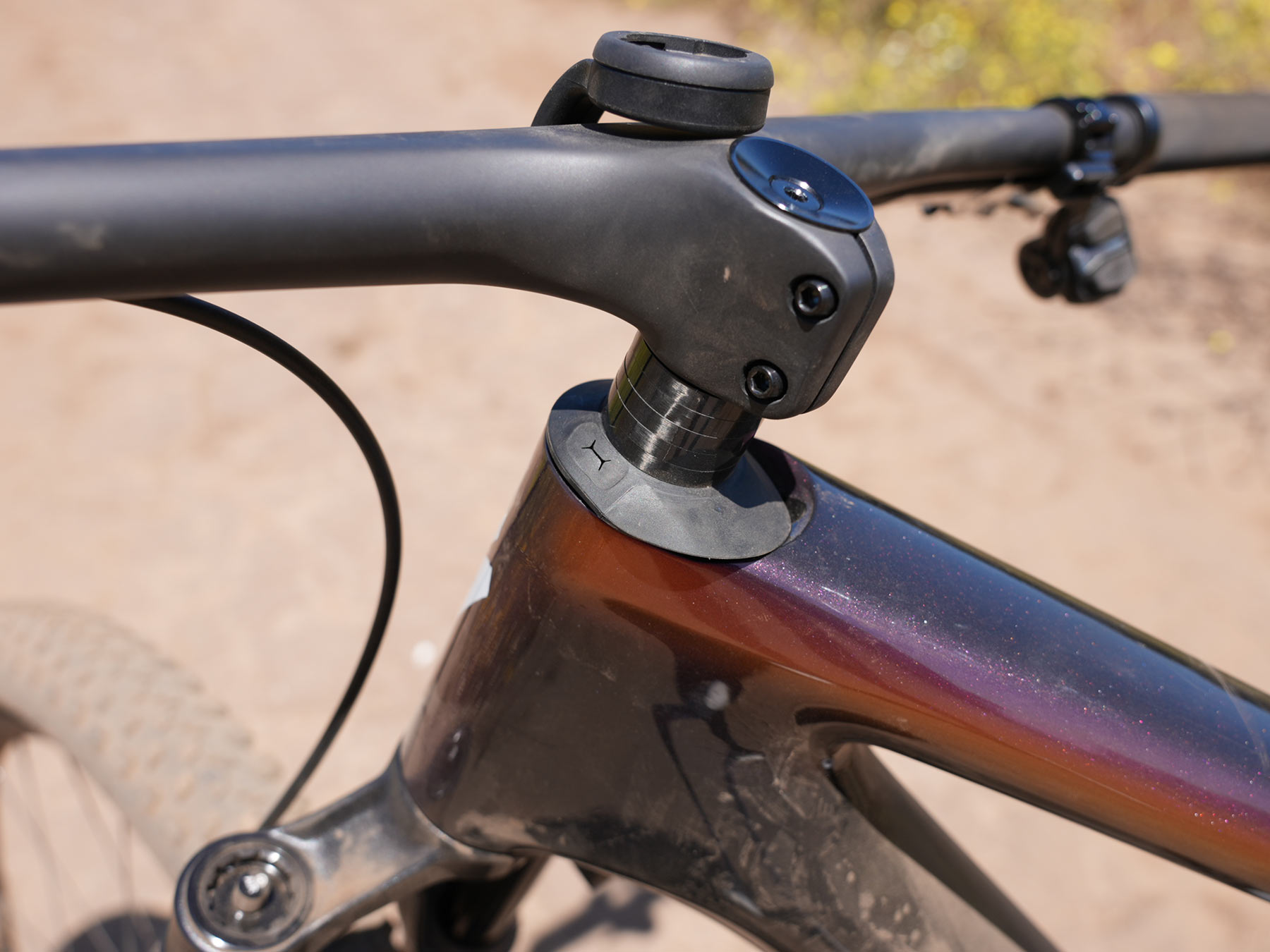
Since the S-Works model has a different carbon and mold (lacking the internal cable management), they could give it different entry ports and went with semi-integrated routing through the headset. It looks great, but any time you’re running brake hoses or cables through the headset bearing, there are concerns. Shops hate to work on them, and the holes in the headset cover introduce opportunities for water and dust ingress.
Specialized acknowledges this, so their cover has a small rubber port with flaps to guide big stuff away, and they say they haven’t had a problem with water ingress unless you’re “pushing it in there” when washing your bike.
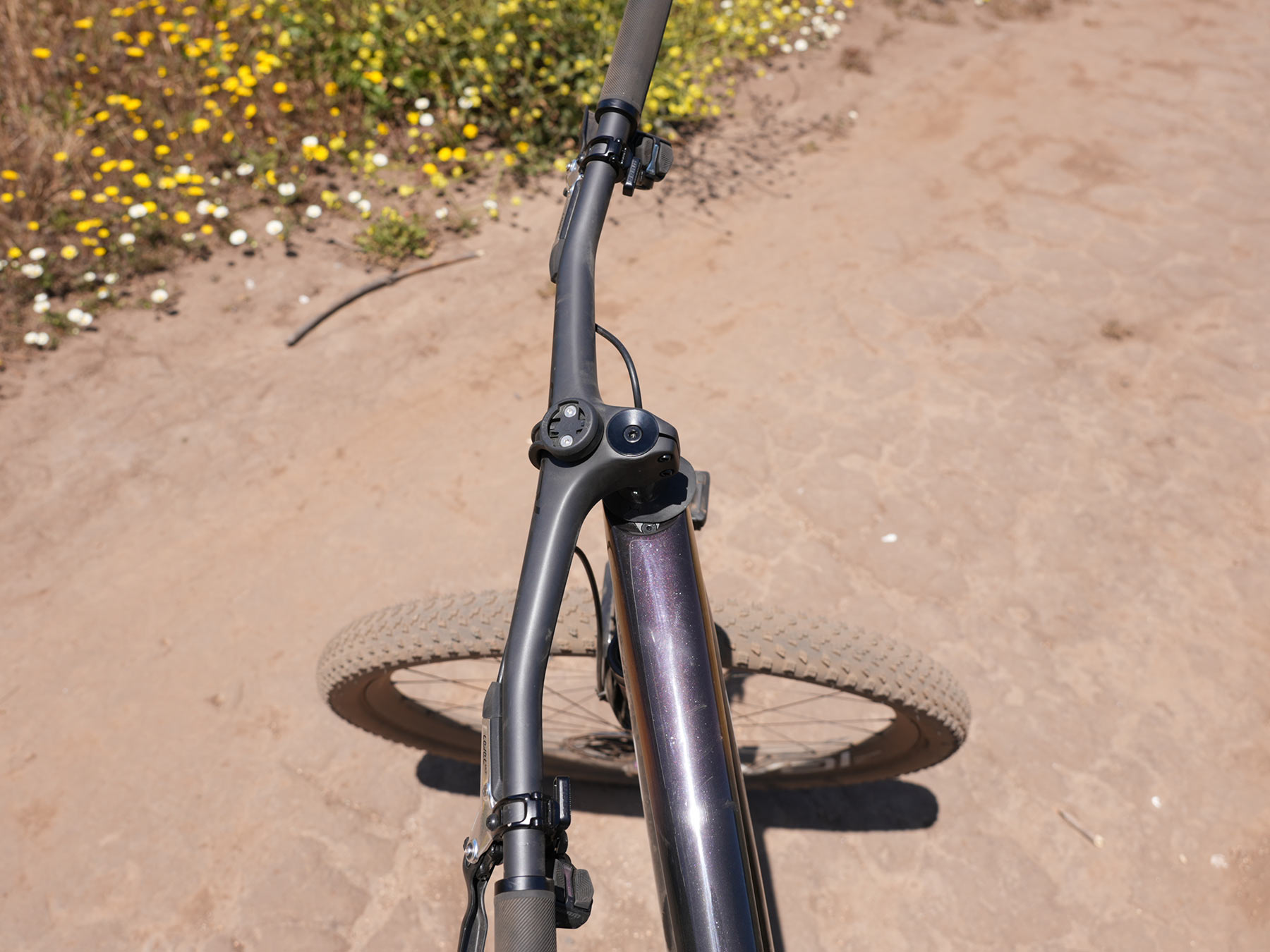
As for service, the only time you’d have to cut or separate the brake hose is if you need to replace the upper headset bearing. And the steering is limited internally to keep the bar from spinning around into your top tube or twisting up the cables inside.
There’s a new SWAT 4.0, too
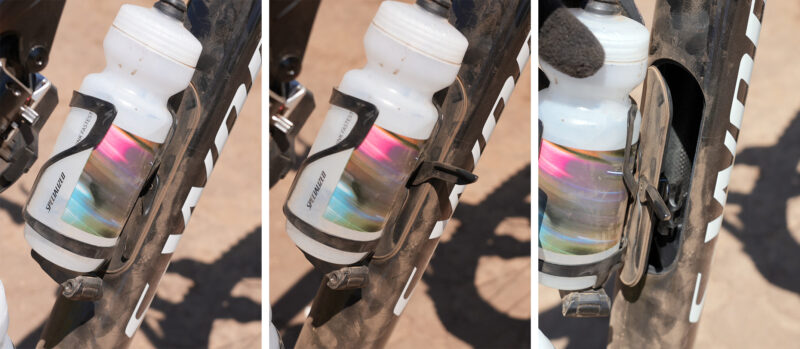
The latest SWAT internal storage gets a new cover and latch with quicker, easier opening and closure. Just flip the lever open and pull off the cover (which doubles as the downtube’s bottle cage mounting spot). The prior version used a hinged clasp to close it, which took longer to operate and was heavier.
The new SWAT door also holds a CO2 and tire plugger on its cover, making those tools quickly and easily accessible. A Specialized mini-tool can be mounted at the base of a bottle cage so that everything you need for emergency repairs is immediately at hand.
2024 Specialized Epic 8 S-Works
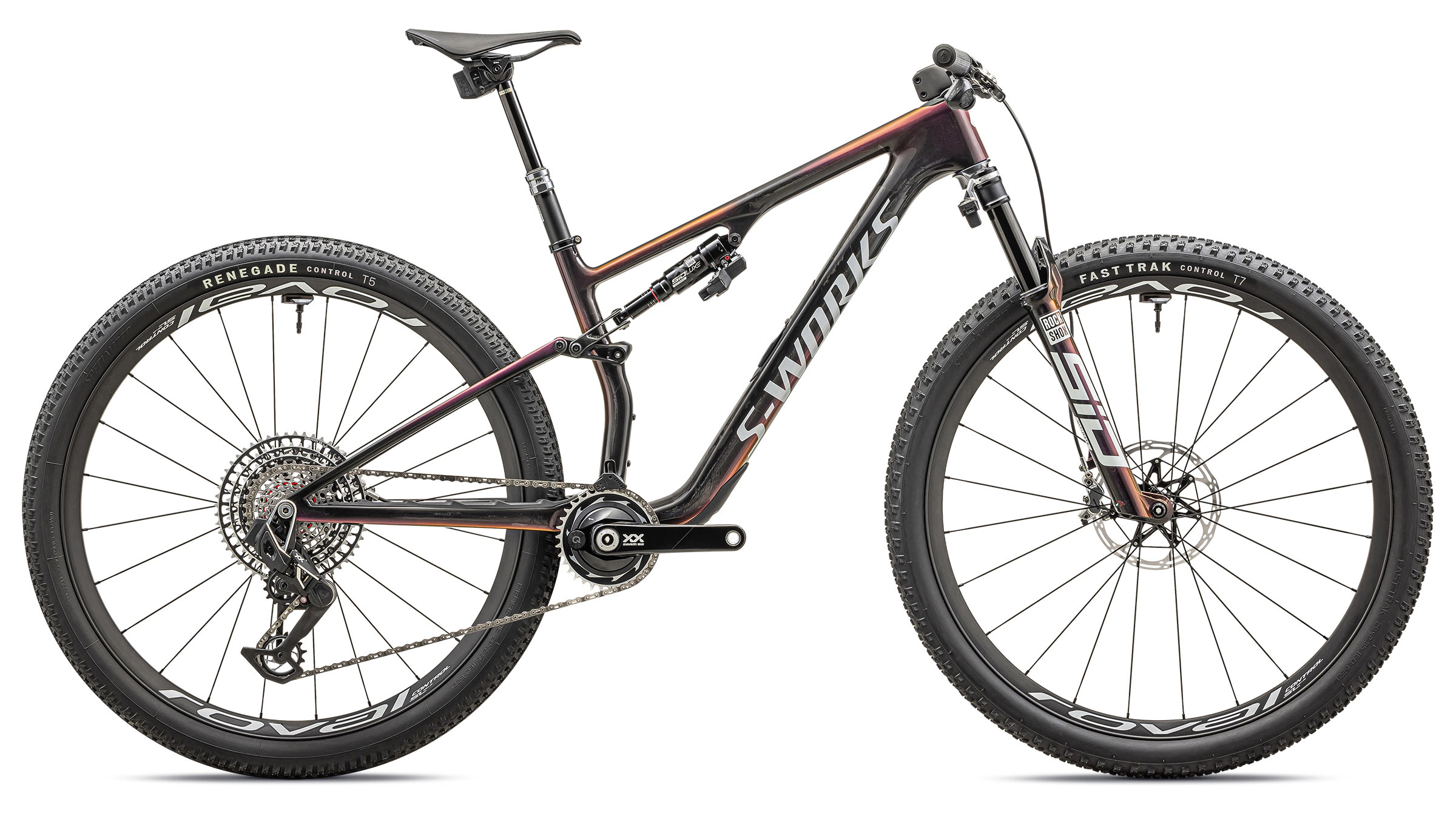
For riders wanting (and willing to pay for) the very best, the top Epic 8 S-Works bike rings in at a whopping $14,500. It’s outfitted with the new RockShox Flight Attendant XC suspension, which partially explains the pricing but is also what makes this a purebred race machine with a singular focus on winning.
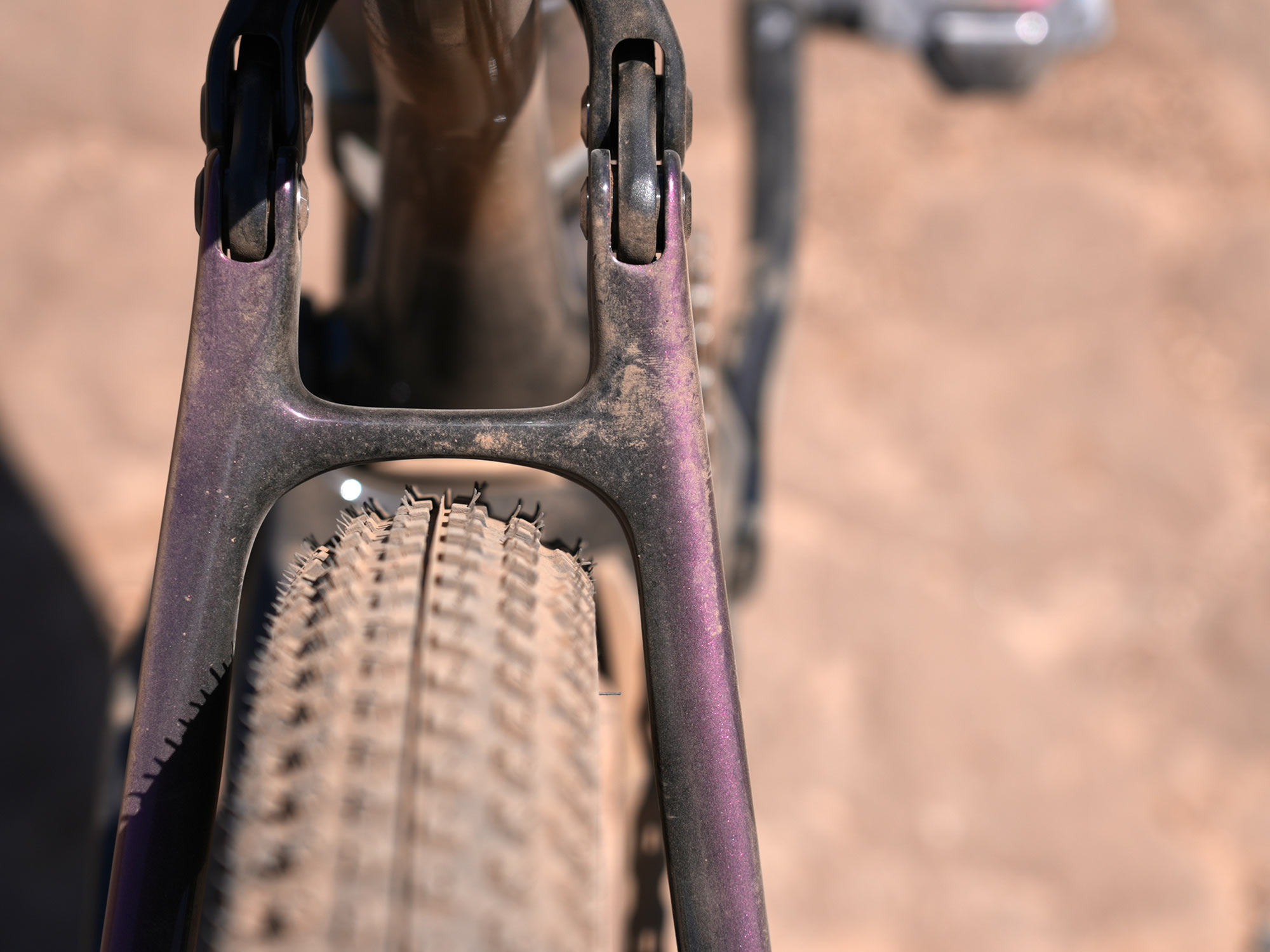
All Epic 8 models come with Rockshox suspension front and rear, all with the custom tunes and modes mentioned above. And all come with Specialized Fast Trak 2.35″ (front) and Renegade 2.3″ (rear) tires.
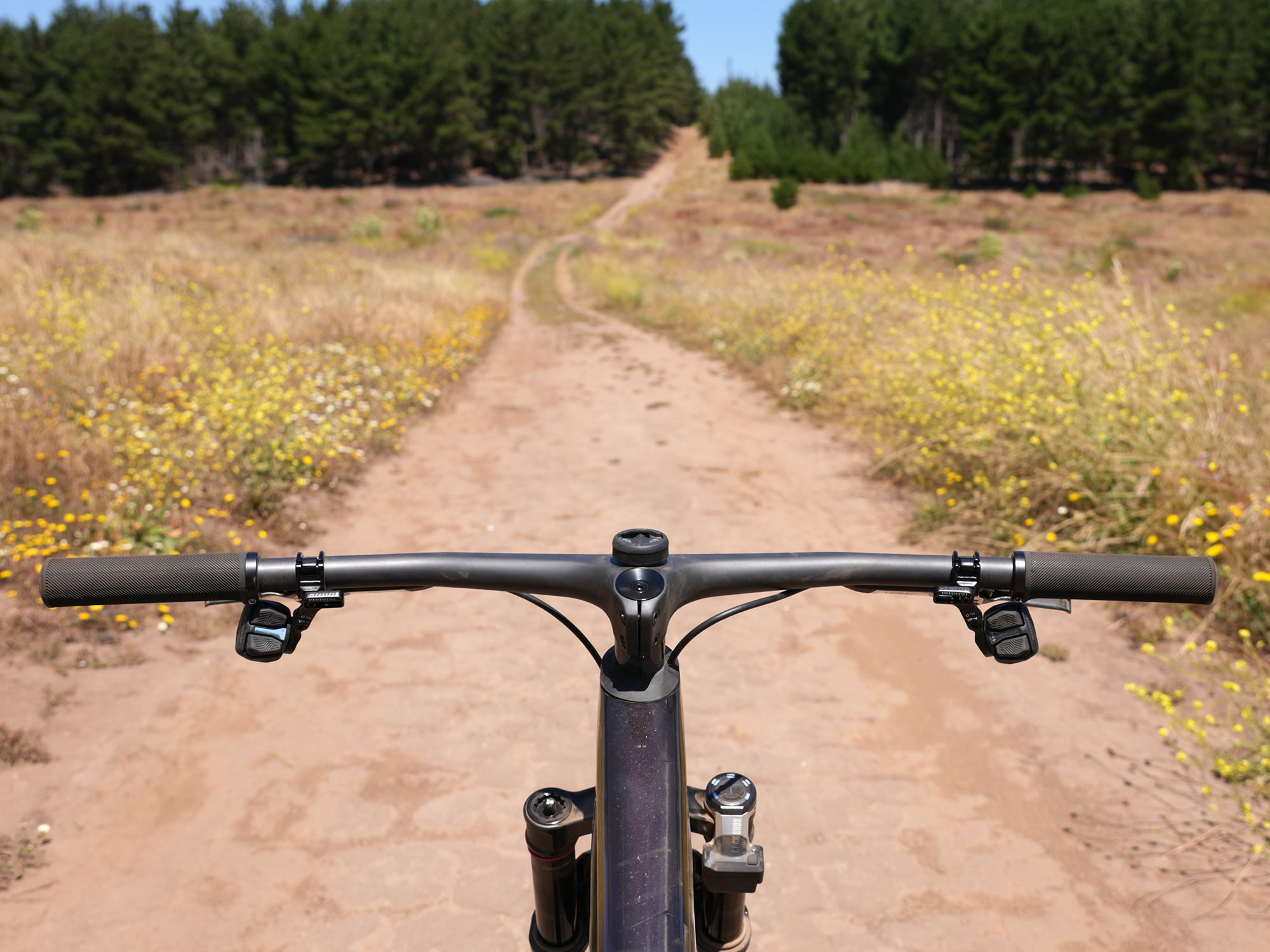
The S-Works model gets the Roval Control SL integrated cockpit and, at launch, Roval Control SL wheels with DT180 hubs and ceramic bearings.
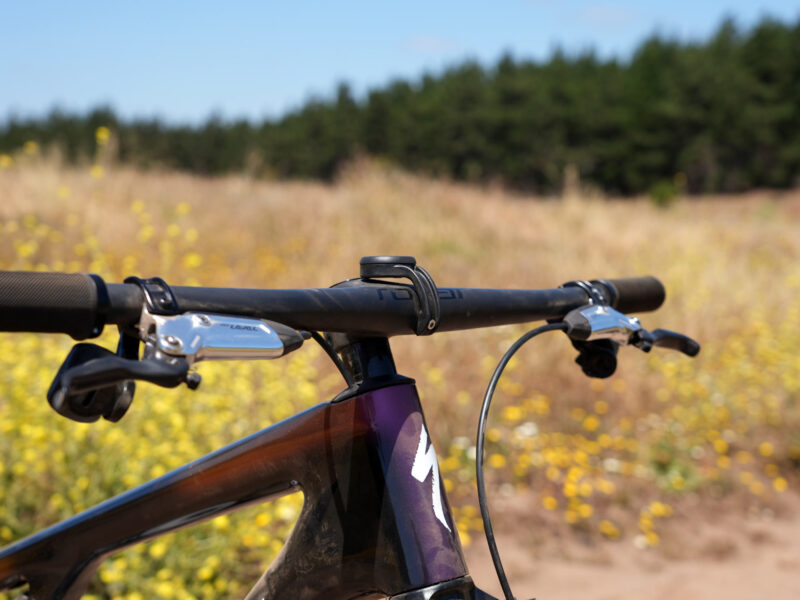
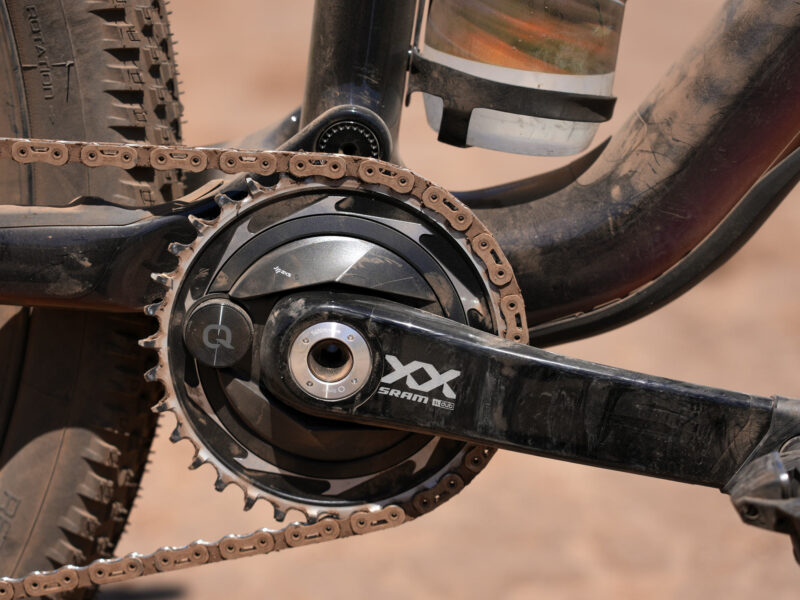
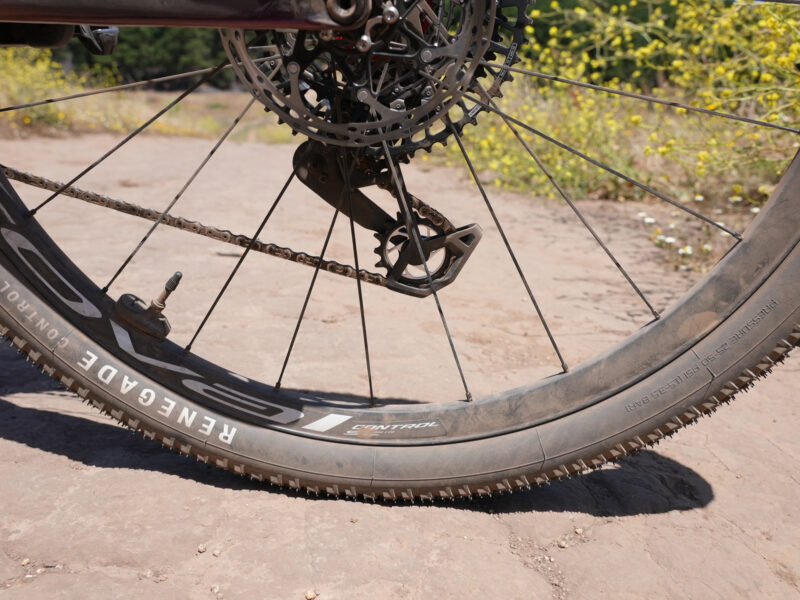
The drivetrain is SRAM XX SL Eagle AXS T-Type w/ Reverb AXS (125/150/170mm travel depending on frame size) and SRAM Level Ultimate Stealth brakes. It’s also the first bike they’re shipping with their top-of-the-line S-Works Power 3D-printed saddle with carbon rails and base.
Claimed weight is 10.24kg (22lb 9.2oz) for size medium. Available in two colors. It’s also available as a frameset (3.67kg – 7lb 15oz) that includes the SWAT, Roval Control SL seatpost, SID Ultimate fork, and SIDLuxe Ultimate shock (including the grips with Twist-Loc remote), seat binder with ti bolt.
2024 Specialized Epic 8 Pro / Expert / Comp
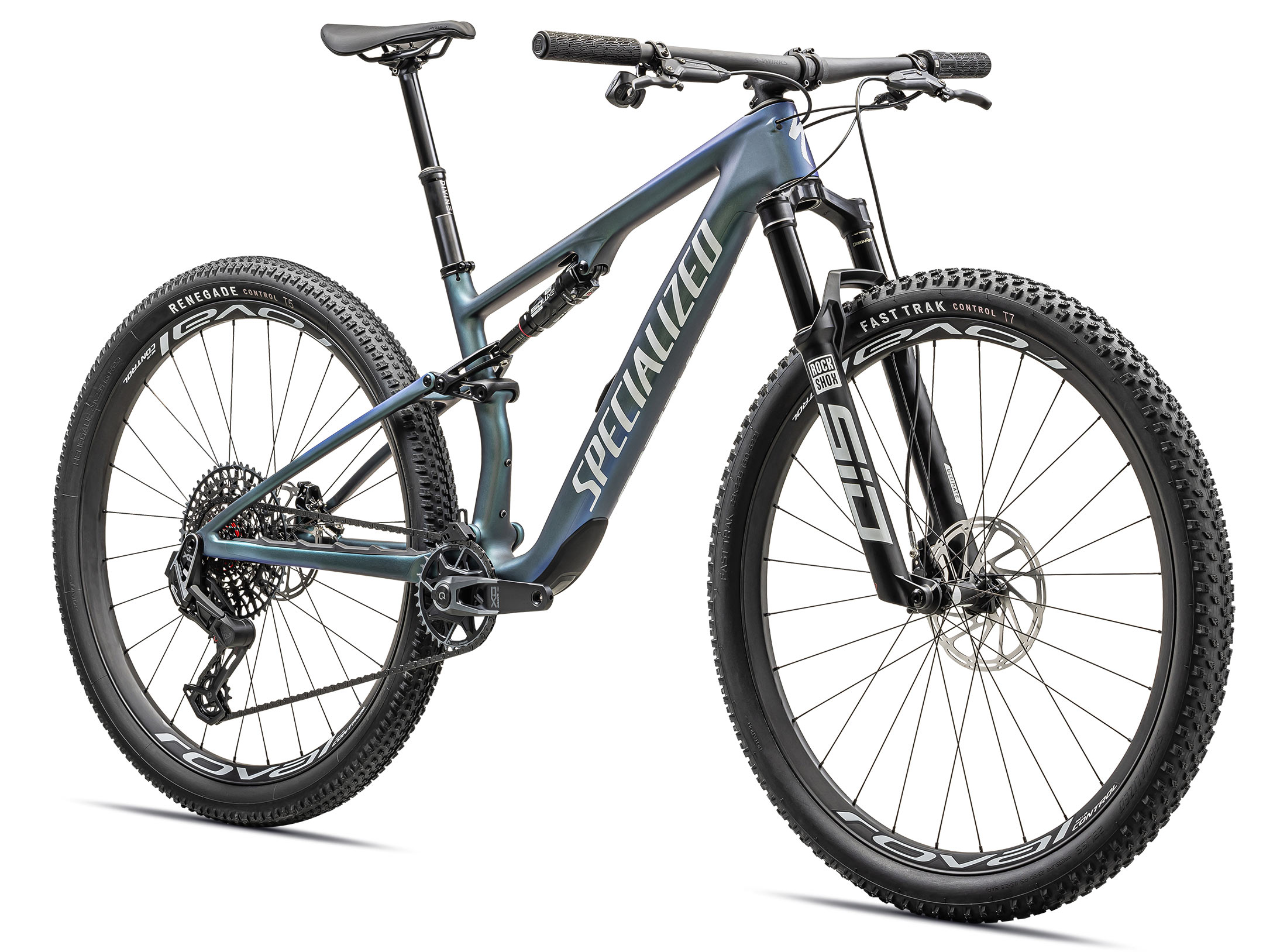
The remaining Epic 8 models all have flat handlebars with traditional stems. The Epic 8 Pro gets Roval Control wheels, SRAM XO AXS Eagle Transmission, S-Works carbon handlebar, Bike Yoke Divine SL dropper, and Power Expert saddle. Claimed weight 10.87kg (23lb 15.4oz), MSRP $9,000.
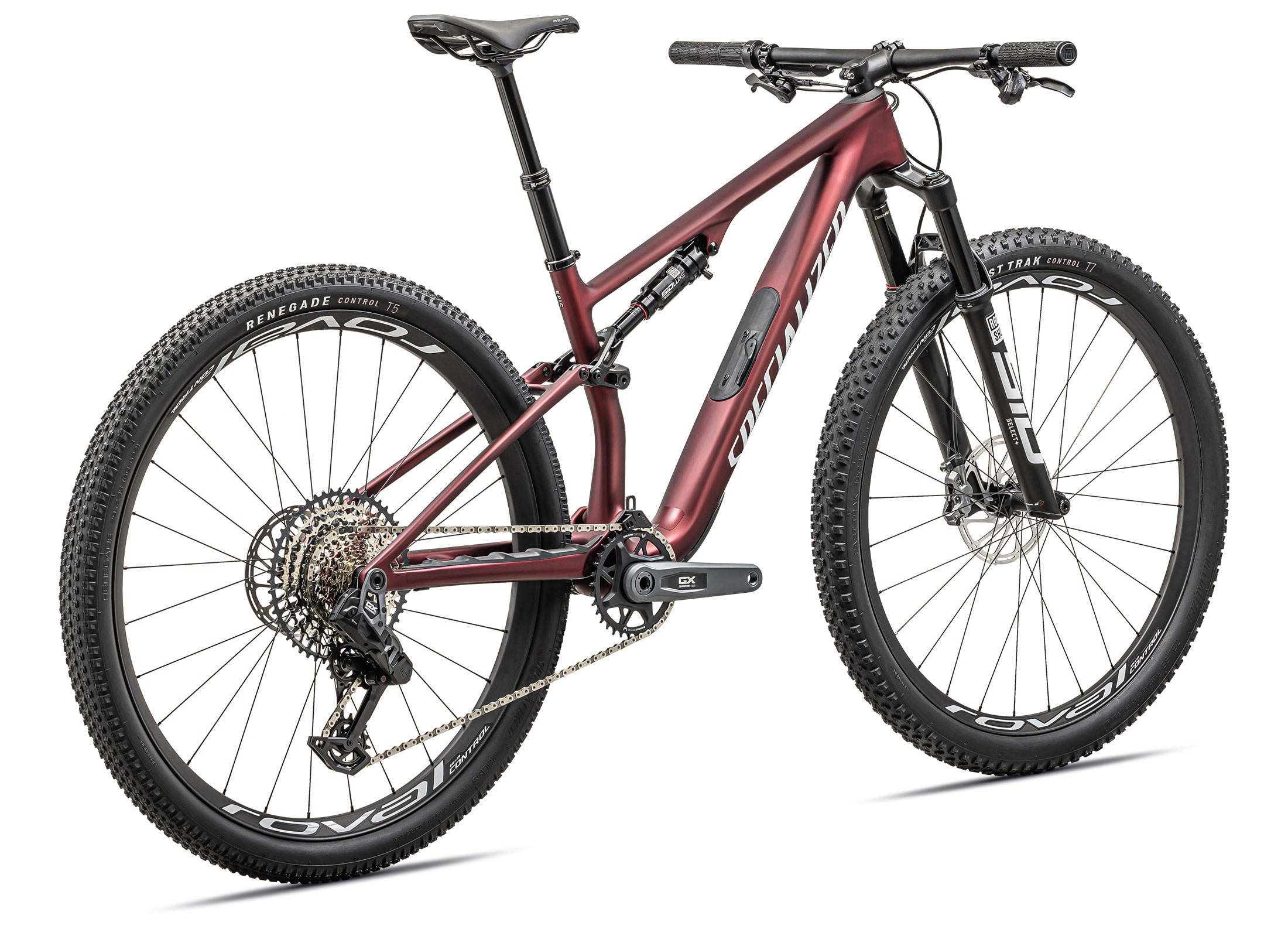
The Epic 8 Expert gets SID Select+ suspension, GX Eagle AXS Transmission with SX cassette, X-Fusion Manic dropper, and Power Sport saddle. Claimed weight is 11.1kg (24lb 7.5oz), MSRP of $7,000.
The Epic 8 Comp (not shown) keeps the Select+ SID suspension but drops down to GX Eagle 12-speed mechanical and alloy wheels. Claimed weight is 11.7kg (25lb 12.7oz), MSRP is $5,000.
2024 Specialized Epic 8 EVO
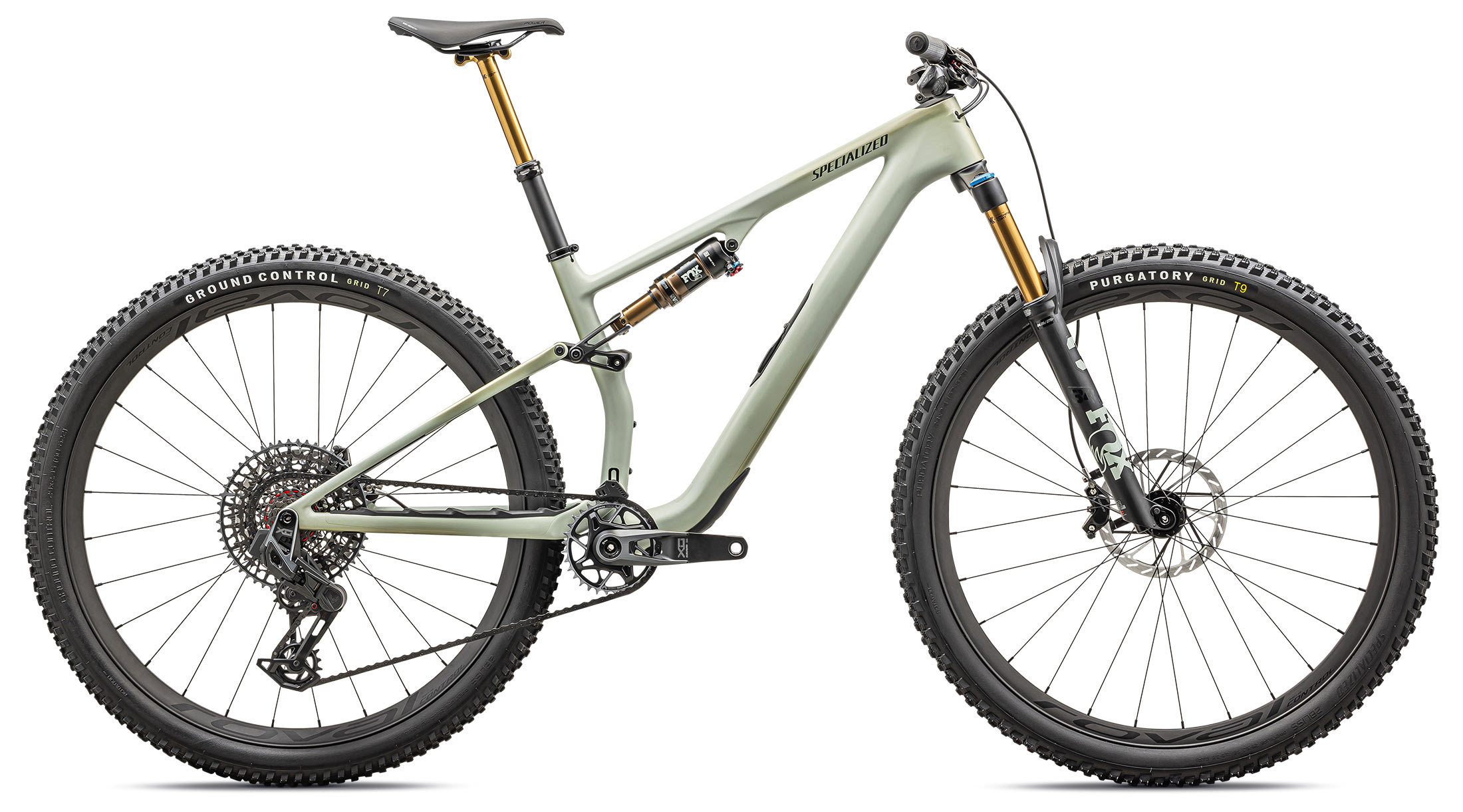
It’s worth noting that this is the first time the EVO model shares the same frame as the standard Epic. Meaning, you can throw lighter, faster tires on it (and maybe a 120mm fork) and have a very good race bike, too. Or buy the standard Epic 8 to get the three-mode “Magic Middle” rear shock, then put bigger tires and a longer fork on it.
It’s also worth noting that the prior Epic EVO was their racers’ bike of choice for most XCO tracks in 2023, which also explains why the non-EVO bikes got a big boost in travel and capability.

But that means the new Epic 8 EVO can focus more on fun, aiming squarely at the light trail/downcountry rider. As such, it gets bigger, more aggressive tires – Purgatory 2.4″ (front) and Ground Control 2.35″ (rear).
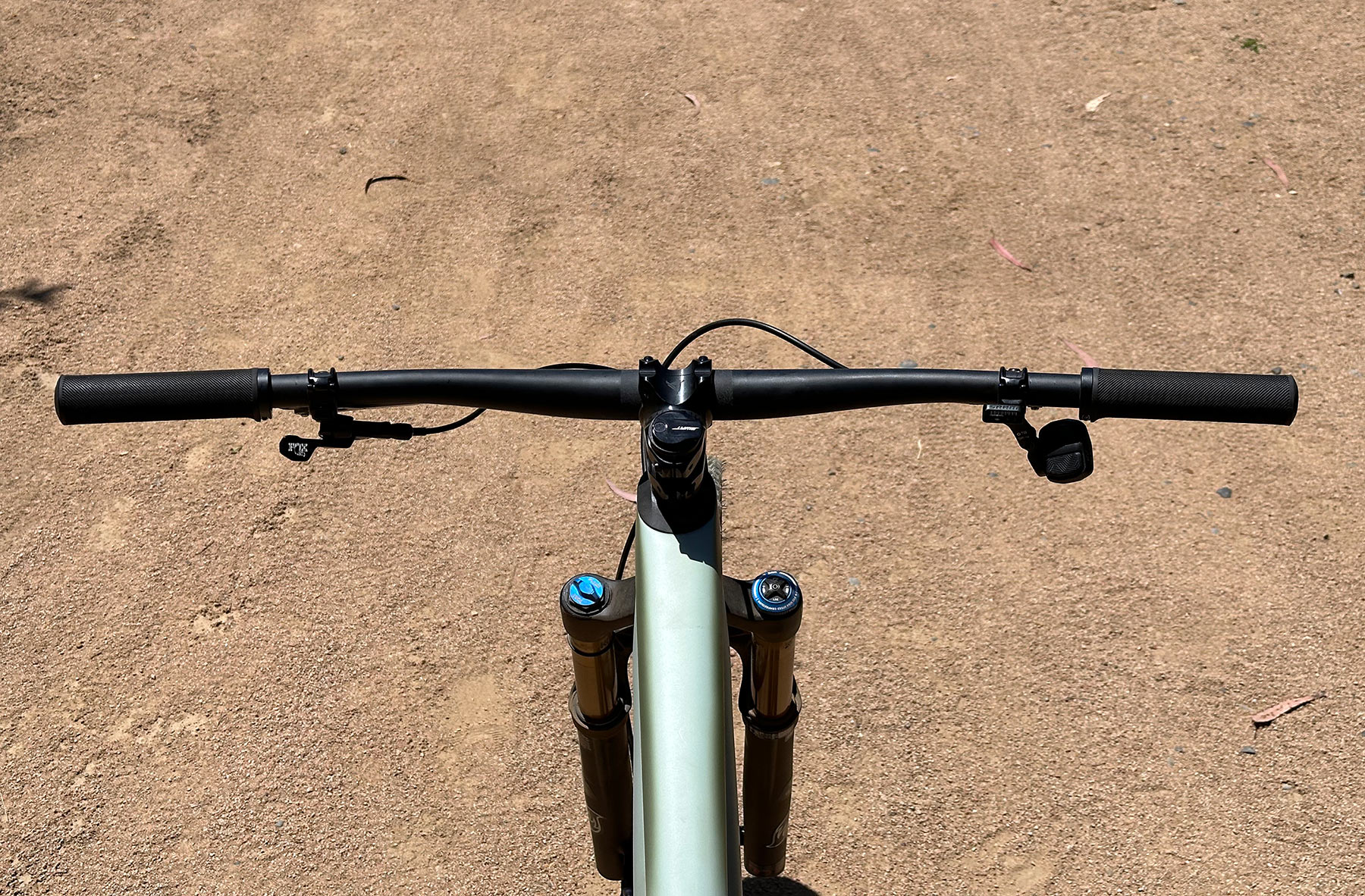
Shown above, the Epic 8 EVO Pro headlines with SRAM XO Eagle Transmission, Roval Control wheels with carbon rims and Industry Nine 1/1 hubs, Fox Transfer dropper, 34 Factory fork, and FLOAT Factory Evol LV rear shock, Roval Control Rise carbon handlebar, Race Face stem, and Specialized Power Expert saddle. Claimed weight is 12/12kg (26lb 11.5oz), MSRP is $8,500.
An Epic 8 EVO Pro frameset gets you the frame and shock for $3,800 (claimed weight 2.2kg – 4lb 14oz). Not shown, the US market will also get a $7,000 Epic 8 EVO Expert model, too.
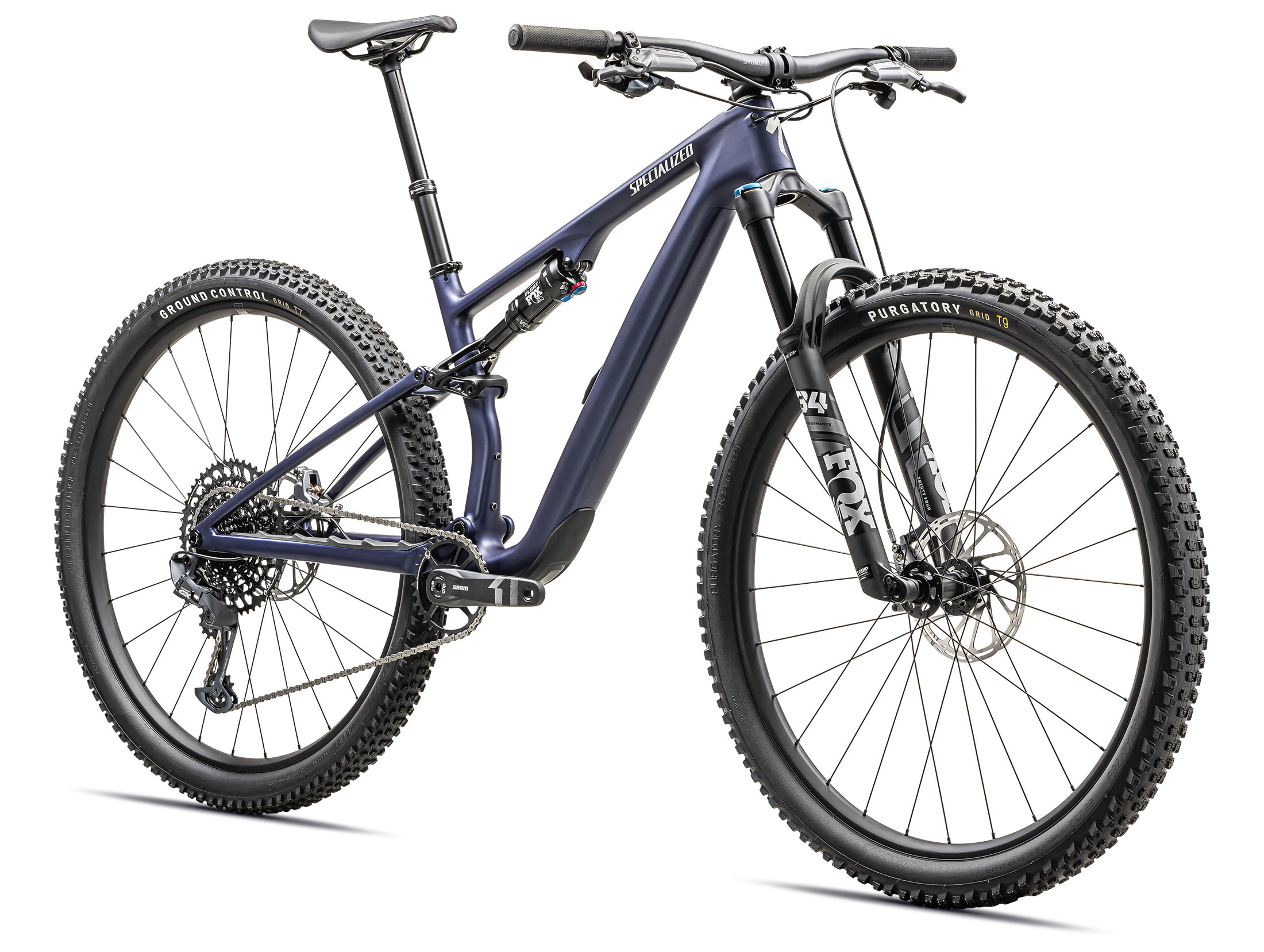
The Specialized Epic EVO Comp bike gets you Fox Performance suspension, SRAM GX/NX mechanical drivetrain, Code brakes, basic alloy wheels, and an X-Fusion Manic dropper for $5,000. Claimed weight is 12.61kg (27lb 12.8oz).
